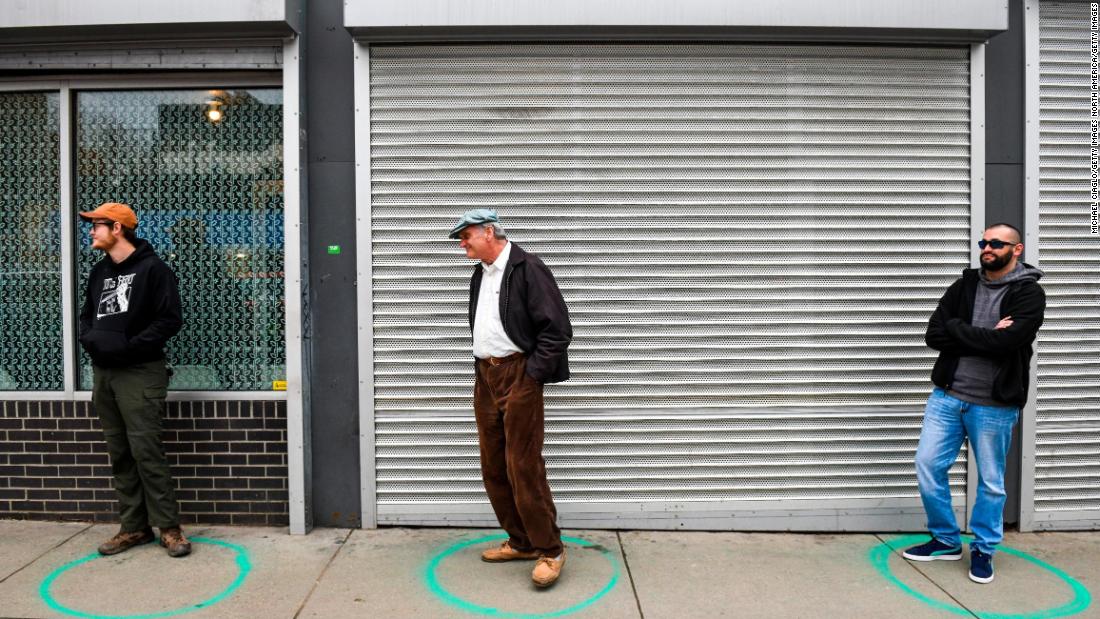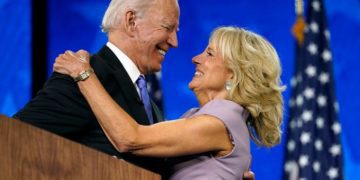[ad_1]
“Hygiene, social distancing — the behavior changes will need to be sustained for some time, certainly until we get a vaccine,” said Washington state Secretary of Health John Wiesman.
“Nobody should think we are going back to what it was like before we implemented these measures,” Wiesman told a briefing organized by the Association of State and Territorial Health Officials (ASTHO).
“We won’t have a grand opening of Pennsylvania. It will be a slow approach,” said Pennsylvania’s health secretary, Dr. Rachel Levine.
Governors emphasized the message. “Right now while our numbers are still climbing and we are still heading up that curve, not down, it is absolutely critical for Marylanders to stay home, to continue avoiding crowds and gatherings, and to aggressively practice social distancing,” Maryland Gov. Larry Hogan said at a news conference.
“We’re not out of the woods,” California Gov. Gavin Newsom said at his own briefing.
Most US states are asking or ordering residents to stay at home, except for essential errands, to try to slow the worsening spread of the virus, which has been diagnosed in more than 635,000 people and has killed at least 28,000, according to a tally kept by Johns Hopkins University. More than 90% of the US population is currently under a stay-at-home or shelter-in-place order.
No back to normal, but a ‘new normal’
President Donald Trump said repeatedly he would like to reopen the nation’s economy by May 1. But governors and state health officials threw cold water on that idea in their daily briefings.
“So when people say that it’s time to stop what we’re doing and get back to normal, they’re wrong,” said Virginia Gov. Ralph Northam.
“Right now … our hospitals expect that we’ll be able to handle the expected surge in patients. But if we let off the brakes and try to go back to the way things were, we will see another spike in cases that could overwhelm our hospitals,” Northam said
Virginia’s stay-at-home order currently remains in effect until June 10.
Instead of back to normal, people should expect a “new normal,” said North Carolina Gov. Roy Cooper. “A restaurant you may go into, they have tables that are only partially full,” he said. Sporting events may be televised only. “You will have no in-person crowds,” he predicted.
“Think about it more as a dimmer switch, which can be adjusted incrementally. As we slowly bring the lights back up, we have to monitor for troubling signs of a spike (in Covid-19 cases).”
Social distancing ‘perhaps until 2022’
Tuesday, researchers at the Harvard T.H. Chan School of Public Health said Americans may have to expect intermittent closures and social distancing directives for more than a year, and perhaps until 2022.
Dr. Marc Lipsitch and Stephen Kissler, epidemiology professors and colleagues at Harvard, said their projections indicate the virus would come roaring back fairly quickly once restrictions were lifted.
Last week, another prominent expert in modeling disease outbreaks, Dr. Christopher Murray of the Institute for Health Metrics and Evaluation at the University of Washington, drew the interest of the White House when he said some of his models showed the virus could be gone by summer.
Lipsitch said Murray’s models were based strictly on past disease trends, and did not factor in human behavior and the biology of the virus.
“It’s not a model that most of us in the infectious disease epidemiology field think is well suited,” Lipsitch told reporters.
Virtually everyone in the country is still susceptible to infection with Covid-19, he noted. Until a vaccine is deployed, which will take a year or longer, people will remain susceptible.
Even if testing for the virus is stepped up considerably, without social distancing measures, most areas of the country are going to be unable to cope with renewed outbreaks of the virus, Lipsitch said. “We would expect increasing numbers of cases in the summer,” he said.
Stepping up efforts at contact tracing, testing
One way to help control the spread of the virus without restrictions on people’s movements is to find every new case and track down anyone who may have been infected by that person — an approach called contact tracing.
Several governors said they were stepping up efforts to do that. Hogan said Maryland has 250 people conducting contact tracing statewide, and said plans are underway to quadruple this force to at least 1,000 state employees and outside contractors.
But for contact tracing to be viable, an increase in cases will have to first be controlled by longer quarantines and isolation, said Rhode Island Gov. Gina Raimondo. “When we get to the point where people go to work, kids go to school, the way we’re going to be able to do that safely is if we can quickly identify who is sick or who has been exposed and quickly get them into quarantine or isolate them,” she said.
“That’s the name of the game to have a more pinpointed focus way, instead of this blunt instrument of closing all restaurants and having social distancing, which is something we can’t maintain.”
Many states are also expanding testing.
“We’re rolling out a new testing strategy,” Tennessee’s health commissioner, Dr. Lisa Piercey, said at her state’s daily briefing. “First of all, we have expanded testing criteria. (You) no longer have to have those classic symptoms of fever, cough or shortness of breath to qualify for testing. Essentially if you think you need a test, we will test you,” she promised.
Not every state is on board with staying the course. Wednesday, Oklahoma Gov. Kevin Stitt said he was actively working on a plan to reopen the state’s economy, possibly as early as April 30, when the current stay-at-home order expires.
But Stitt also said he would extend stay-home recommendations for the state’s “most vulnerable populations” until May 6.
“We need to keep up our guard, but we are looking, and working, on a plan to safely open up our state,” he said.
CNN’s Dan Shepherd, Rebekah Riess, Janine Mack and Pamela Wessmann contributed to this report.




















